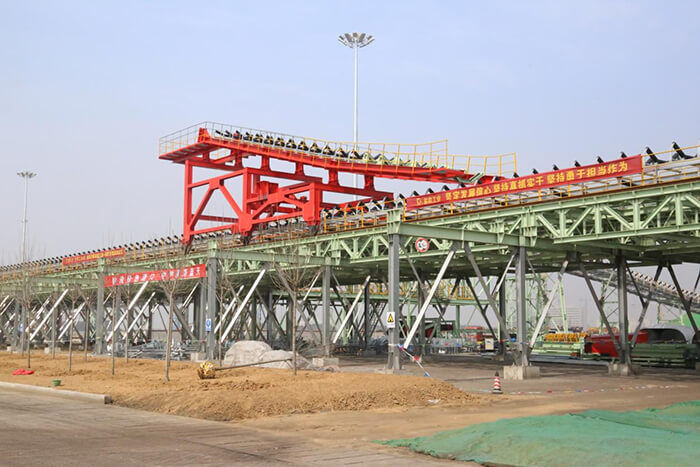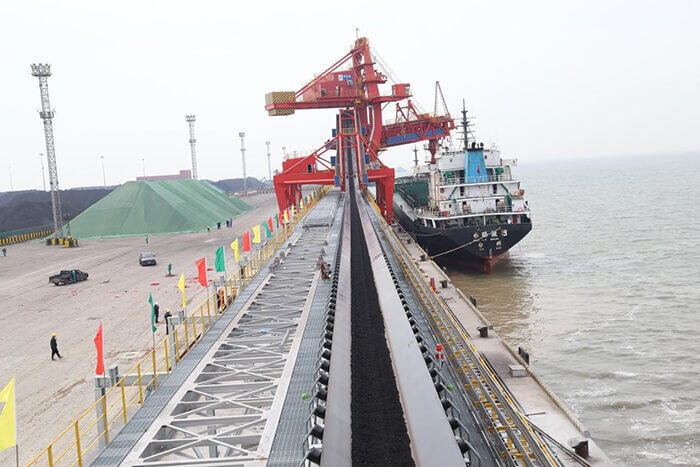News
As the world continues to rely on fossil fuels to meet energy needs, coal remains a critical component of the global energy mix. And at the heart of the coal supply chain are coal terminals - where coal is stored, blended, and loaded onto ships for transport to power plants around the world.
One crucial component of any coal terminal is the belt conveyor system that moves coal from the storage yard to the loading facility. These conveyor systems are critical to the efficient operation of the terminal, and their design, installation, and maintenance require careful consideration.
At their most basic, belt conveyor systems consist of a belt, pulleys, types of idler rollers and a motor that drives the belt. But in practice, they can be much more complex, with multiple belts, transfer points, and monitoring systems to ensure that the coal is moved safely and efficiently.

One of the most significant challenges facing coal terminal operators is maintaining the integrity of the conveyor belt. Over time, the belt can become damaged or worn, leading to costly downtime and repairs. To minimize the risk of belt failure, operators must regularly inspect the belt for signs of wear, such as cracks, fraying, or damage to the belt's edges.
Another critical consideration for conveyor belt systems is dust control. Coal dust can be hazardous to workers' health, and it can also pose a fire risk if it accumulates on or near the belt. To minimize dust emissions, terminal operators must install dust suppression systems, such as water sprays or foggers, to keep the coal damp and prevent it from becoming airborne.
In addition to these technical challenges, coal terminal operators must also consider the environmental impact of their operations. The transport and burning of coal are significant sources of greenhouse gas emissions, contributing to climate change. To minimize the environmental impact of their operations, terminal operators must invest in sustainable technologies, such as carbon capture and storage, and work to reduce their overall carbon footprint.
As the world continues to transition to cleaner energy sources, the role of coal in the global energy mix is likely to decline. But for the foreseeable future, coal terminals will remain critical components of the global energy infrastructure. And at the heart of these terminals will be the belt conveyor systems that move coal from storage to ship, making it possible to power homes and businesses around the world.
Our coal/mine terminal belt conveyor system project overview:
The wharf for belt conveyor and unloading trolley system application of East Coal South shift project in Shijiu port area, Rizhao port is located in the south 5 × 3-7 × 3 berth of the East coastline of the three port pool in the South operation area of Shijiu port area, Rizhao Port, and the storage yard is located in the east side of the coke yard in the middle of the South three jetties.
The project has built 21 belt conveyors for coal unloading, stacking, transferring, reclaiming and loading, including 7 transfer rooms, 3 transfer platforms, 6 head platforms and their auxiliary facilities, which will adopt the mode of combination of new construction and relocation.
(1) the rated capacity of unloading trolley (XL1, XL2) of the project is 3600t / h, and the maximum capacity is 4000t / h.
(2) the belt conveyor system of the project includes two types: the rated capacity of the stacking line belt conveyor system is 3600t / h, the belt width is 1.8m, and the belt speed is 4.0m/s; the rated capacity of the loading line belt conveyor system is 6000t / h, the belt width is 2.2M, and the belt speed is 4.3m/s.
RPIC is a large state owned company belong to Shandong Port Group Co Ltd which is the world largest port operation group company.
As the EPC conveyor projects contractor, we are professional in design, manufacture, install and maintenance belt conveyor and components idler rollers, conveyor frame and roller frames, belt covers for over 30 years since 1986.

Request a Free Estimate
